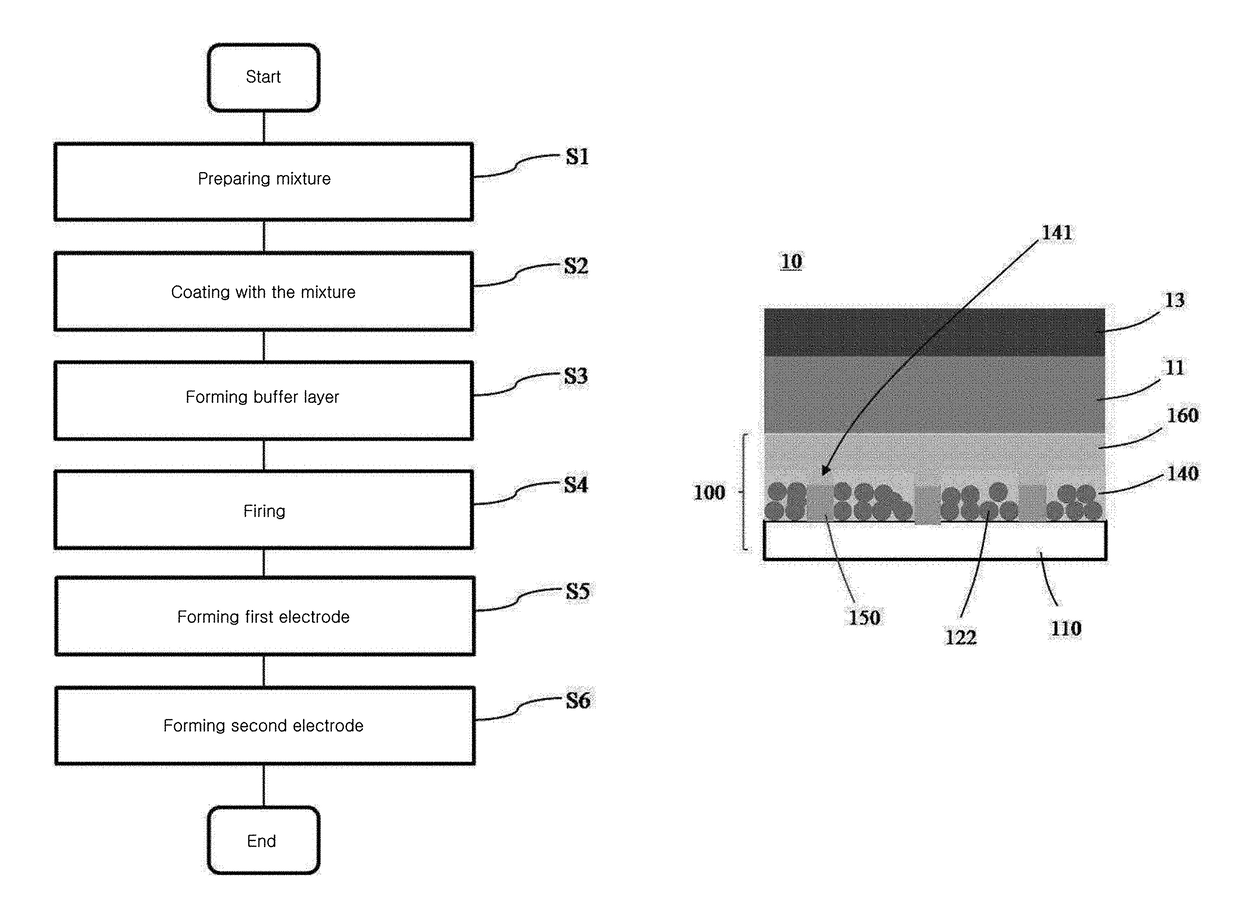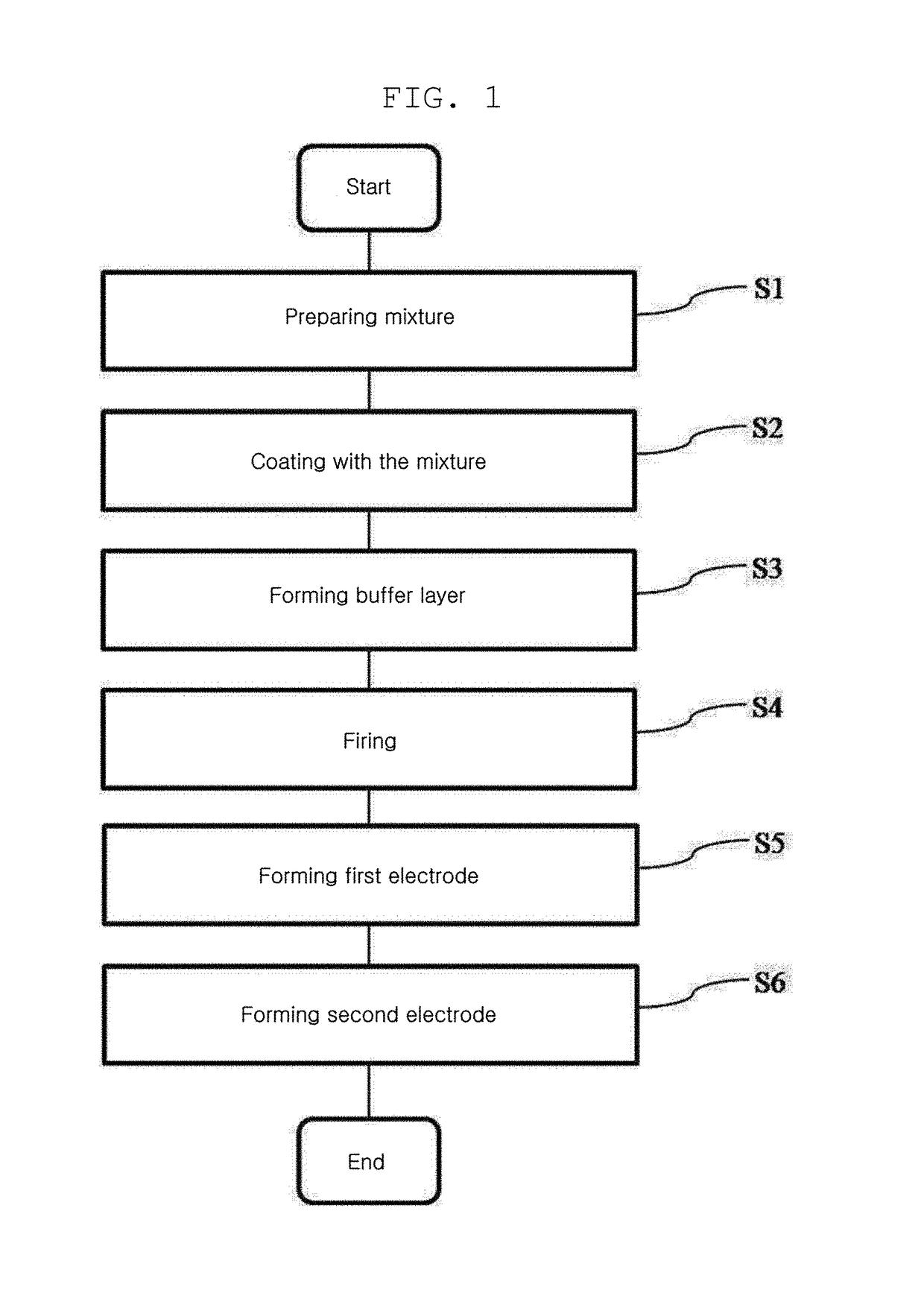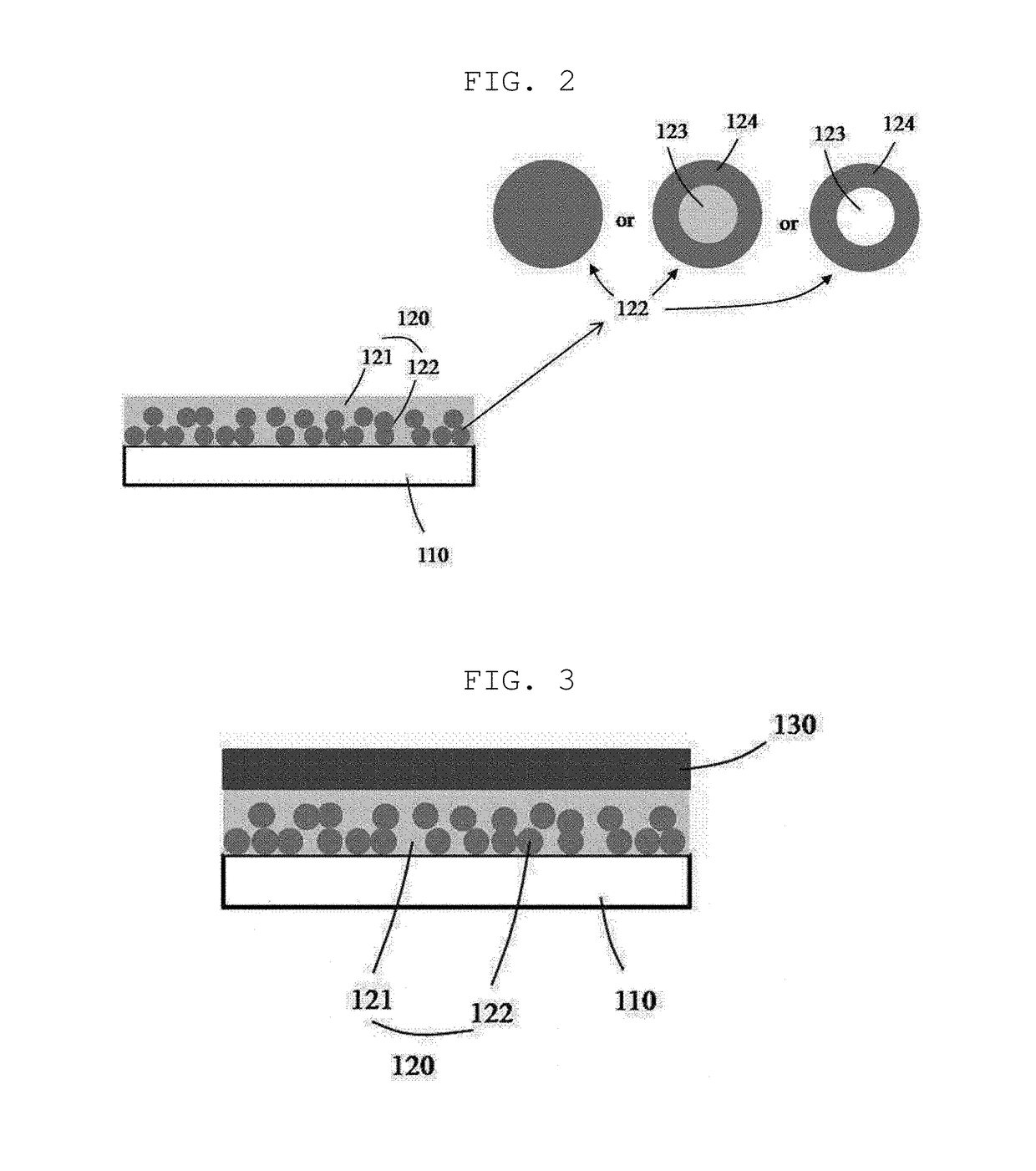Method for manufacturing light extraction substrate for organic light-emitting element, light extraction substrate for organic light-emitting element, and organic light-emitting element comprising same
a technology of organic light-emitting elements and manufacturing methods, which is applied in the direction of basic electric elements, electrical devices, semiconductor devices, etc., can solve the problems of reducing the overall luminous efficiencyaffecting forming fine cracks in the coating film. , to achieve the effect of improving the light extraction efficiency and luminance uniformity reducing the fabrication cost of the oled devi
- Summary
- Abstract
- Description
- Claims
- Application Information
AI Technical Summary
Benefits of technology
Problems solved by technology
Method used
Image
Examples
Embodiment Construction
[0038]Hereinafter, a method of manufacturing a light extraction substrate for an organic light-emitting device or an organic light-emitting diode (OLED) device, a light extraction substrate for an OLED device, and an OLED device including the same according to exemplary embodiments will be described in detail with reference to the accompanying drawings.
[0039]In the following description, detailed descriptions of known functions and components incorporated herein will be omitted in the case in which the subject matter of the present disclosure may be rendered unclear by the inclusion thereof.
[0040]A method of manufacturing a light extraction substrate for an organic light-emitting device or an OLED device according to an exemplary embodiment is a method of manufacturing a light extraction substrate (100 in FIG. 9) that is disposed on a path, along which light emitted by an OLED of an OLED device (10 in FIG. 9) exits, to function as a route through which light emitted by the OLED can ...
PUM
 Login to View More
Login to View More Abstract
Description
Claims
Application Information
 Login to View More
Login to View More - R&D
- Intellectual Property
- Life Sciences
- Materials
- Tech Scout
- Unparalleled Data Quality
- Higher Quality Content
- 60% Fewer Hallucinations
Browse by: Latest US Patents, China's latest patents, Technical Efficacy Thesaurus, Application Domain, Technology Topic, Popular Technical Reports.
© 2025 PatSnap. All rights reserved.Legal|Privacy policy|Modern Slavery Act Transparency Statement|Sitemap|About US| Contact US: help@patsnap.com



